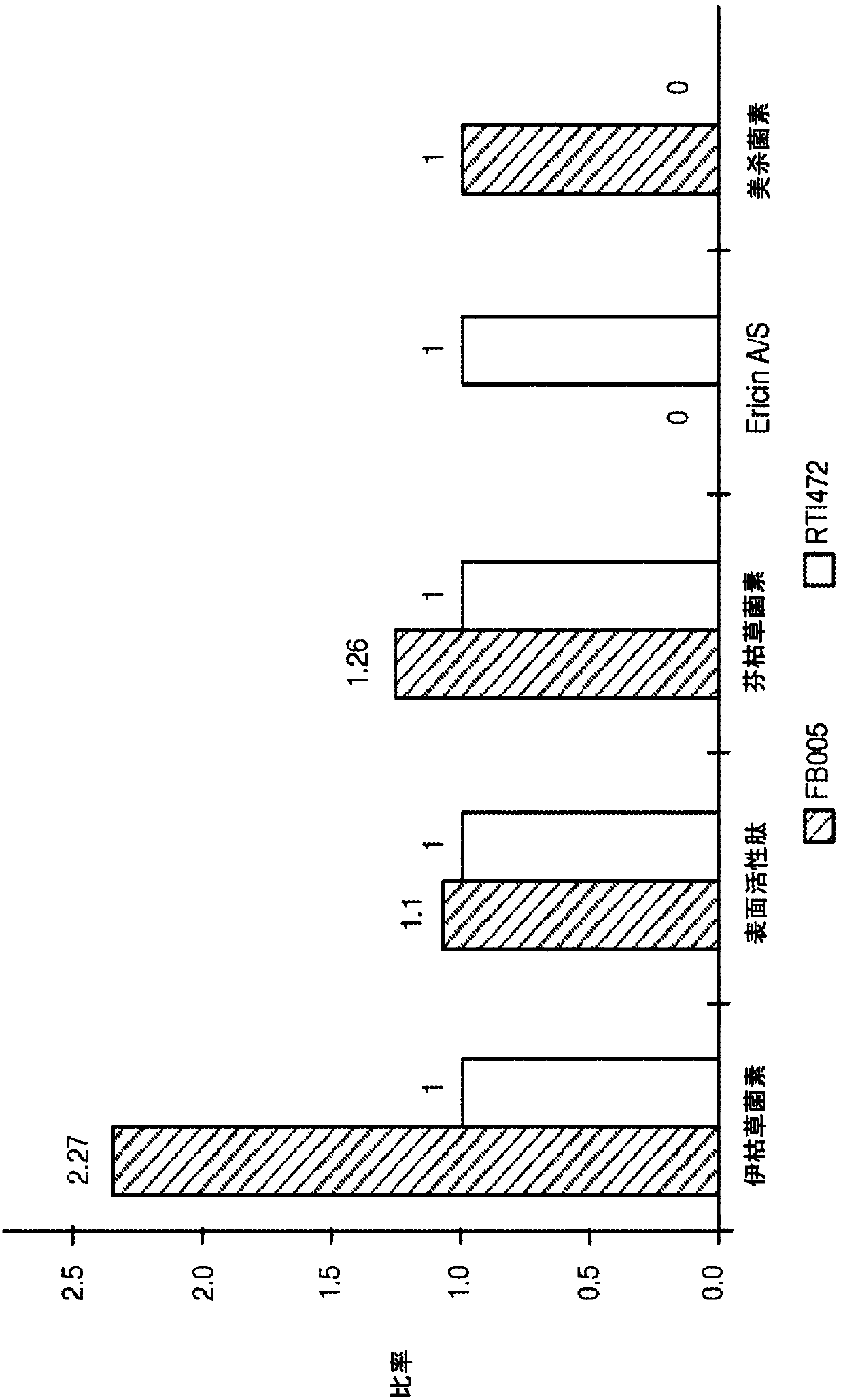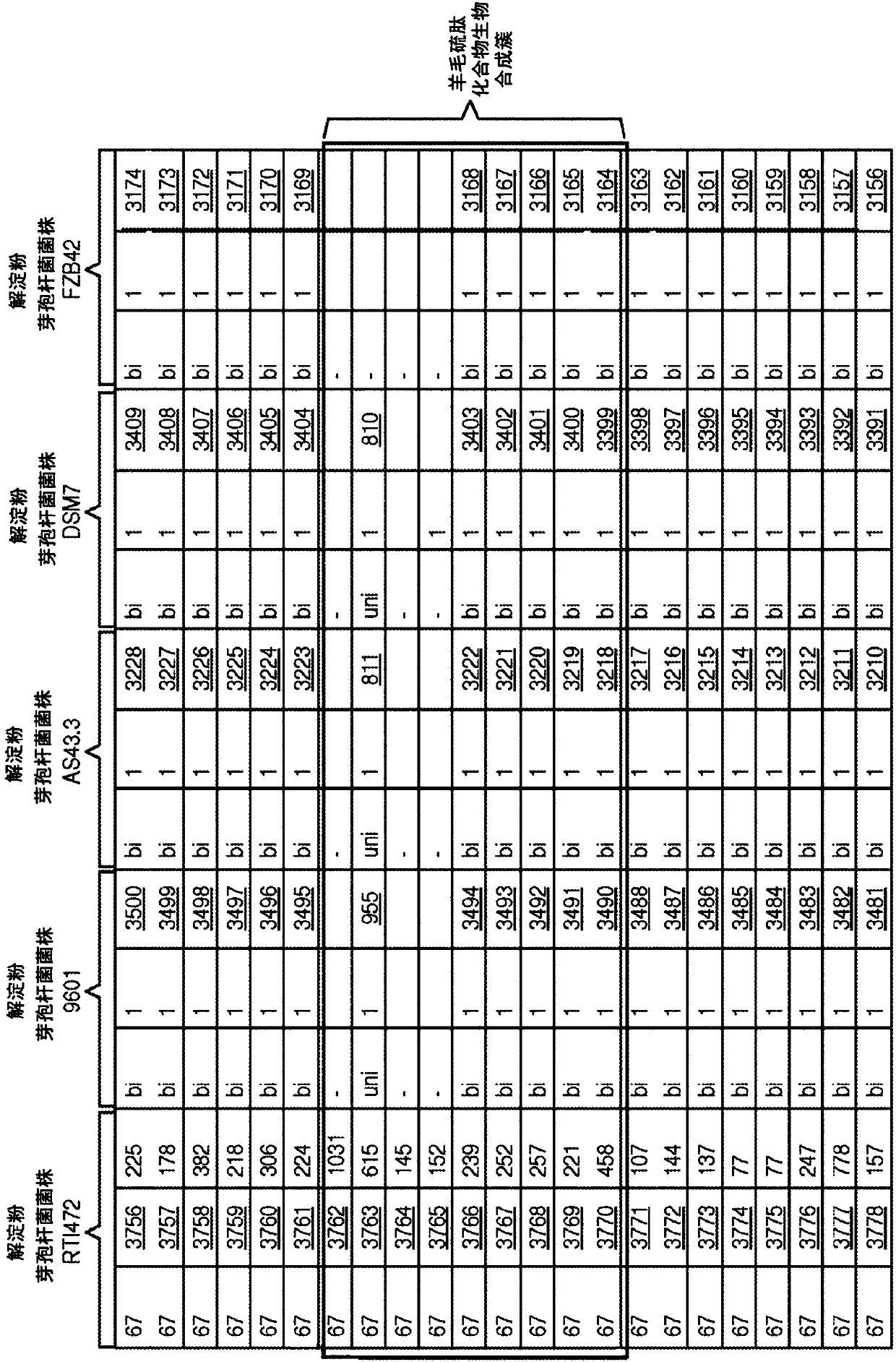Bacillus amyloliquefaciens rti472 compositions and methods of use for benefiting plant growth and treating plant disease
A technology for amylolytic spores and plant growth, applied in botany equipment and methods, plant growth regulators, plant growth regulators, etc., can solve the problems of bacteria, fungi, and arthropods, such as adverse effects, economic losses, losses, etc.
- Summary
- Abstract
- Description
- Claims
- Application Information
AI Technical Summary
Problems solved by technology
Method used
Image
Examples
other Embodiment approach
[0102] Other embodiments may further include at least one of an antifreeze agent, an antifoam agent, and a microbicide.
[0103] In one embodiment there is provided a composition for promoting plant growth, the composition comprising: a biologically pure culture of Bacillus amyloliquefaciens RTI472 deposited under ATCC No. PTA-121166, or a mutant having all its identifying characteristics substances; and insecticides. Described insecticide can be one of following or their combination: pyrethroid (pyrethroids), bifenthrin, tefluthrin, ζ-cypermethrin, organophosphate, tetrachlorethylphos, chlorpyrifos (chlorpyrifos ), tebupirimphos, cyfluthrin, fiproles, fipronil, nicotinoids or clothianidin. The insecticide may include bifenthrin. The insecticide may include bifenthrin, and the composition may be in a formulation useful as a liquid fertilizer. The composition may further comprise hydrated magnesium aluminum silicate and at least one dispersant. The bifenthrin insecticide ma...
Embodiment 1
[0157] Identification of Bacterial Isolates as Bacillus amyloliquefaciens by Sequence Analysis
[0158] The plant-associated bacterial strain designated RTI474 was isolated from the roots of American ginseng grown in North Carolina. The 16S rRNA and rpoB genes of the RTI472 strain were sequenced and compared with other known bacterial strains in the NCBI and RDP databases using BLAST. The 16S RNA partial sequence (SEQ ID NO: 1) of RTI472 was determined to be compatible with Bacillus amyloliquefaciens strain NS6 (KF177175), Bacillus amyloliquefaciens strain FZB42 (NR_075005) and Bacillus subtilis subsp.subtilis (Bacillus subtilis subsp.subtilis) strain The 16S rRNA gene sequence of DSM 10 (NR_027552) was identical. In addition, the rpoB sequence of RTI472 was determined to have the highest level of sequence similarity (ie, >99% sequence identity) to the known Bacillus amyloliquefaciens AS43.3 strain; however, at the DNA level there are 10 nucleotide difference, indicating t...
Embodiment 2
[0160] Unique genes associated with lanthionine antibiotic biosynthesis in Bacillus amyloliquefaciens RTI472 strain
[0161] Further sequence analysis of the genome of the B. amyloliquefaciens strain RTI472 revealed that this strain possesses a unique gene related to lanthionine antibiotic biosynthesis, whereas a homologue of this gene is absent from other closely related B. amyloliquefaciens strains. A cluster of lanthipeptide biosynthesis was identified in Bacillus amyloliquefaciens RTI472 by computational analysis using RAST, antiSMASH and BAGEL bioinformatics platforms. RAST genome annotation identified a gene region whose protein sequence was putatively associated with lanthipeptide biosynthesis. This was confirmed by antiSMASH data, which identified the same genomic regions as those with lanthipeptide biosynthetic clusters. figure 1 A schematic representation of the genomic organization of the lanthionine antibiotic biosynthetic cluster found in B. amyloliquefaciens R...
PUM
 Login to View More
Login to View More Abstract
Description
Claims
Application Information
 Login to View More
Login to View More - R&D
- Intellectual Property
- Life Sciences
- Materials
- Tech Scout
- Unparalleled Data Quality
- Higher Quality Content
- 60% Fewer Hallucinations
Browse by: Latest US Patents, China's latest patents, Technical Efficacy Thesaurus, Application Domain, Technology Topic, Popular Technical Reports.
© 2025 PatSnap. All rights reserved.Legal|Privacy policy|Modern Slavery Act Transparency Statement|Sitemap|About US| Contact US: help@patsnap.com



